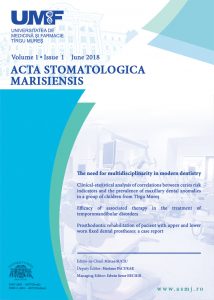In this study, we conducted a detailed morphological analysis of the lingula and foramen mandibulae, aiming to examine their anatomical characteristics and relationships within contemporary and medieval individuals.
Our primary objective was to provide valuable insights to assist clinicians in minimizing potential intraoperative complications during anesthesia procedures targeting the inferior alveolar nerve.
To accomplish this, we examined the mandibular structures of 22 adults, 11 children aged 6-12 from archaeological findings in the Târgu Mureș area, and 14 contemporary adults. Our observations encompassed the size, shape, and spatial relationships of the lingula and foramen mandibulae concerning various points along the ascending branch of the mandible.
The study revealed a distinct order of lingula shapes among medieval children and adults, with the triangle, trapezoid, nodular, and assimilated shapes being most prevalent. In modern adults, the order of nodular and assimilated shapes was reversed. Additionally, oval foramina were more common in adults, while round foramina predominated in children. Notably, there was no statistically significant difference between children and adults in the distance from the most prominent point of the lingula to the anterior edge of the ascending branch.
Our findings imply that the depth at which the inferior alveolar nerve can be accessed remains relatively consistent between children and adults. Furthermore, we identified a correlation between the relationship of the shape of the lingula and the position of the mandibular foramen, providing valuable insights for clinical practice.
Veress Szidonia Krisztina 1, Péter Előd Attila 1, Bojin Helga 1, Száva Dániel Tamás 1, Bögözi Bálint Botond 1, Gál Szilárd Sándor 2, Muresan Mircea Gabriel 1
1 George Emil Palade University of Medicine, Pharmacy, Science, and Technology of Târgu-Mureș, Romania
2 Mures County Museum, Târgu Mureș, Romania
1 George Emil Palade University of Medicine, Pharmacy, Science, and Technology of Târgu-Mureș, Romania
2 Mures County Museum, Târgu Mureș, Romania

Comments are closed.